Feeding calves properly requires expertise
Young calves have a tremendous potential to grow – provided that they are healthy, they are housed properly and they receive the best possible feed. During the first six months of a breeding calf’s life, it can be expected to grow an average of 900 to 1000 grams per day.
Colostrum a crucial factor
We have already written on several occasions about the importance of administering sufficient, good-quality colostrum shortly after birth. This is really crucial if a calf is to have a good start in life. Did you know…?
You should milk the cow within two hours of the birth and administer at least 4 litres of colostrum to the calf within two hours. Preferably colostrum with a Brix value higher than 23. During the following 22 hours, you should administer a portion of around 2 litres of colostrum at least twice. It is then easy to make the switch to powdered milk.
Milk period
From day two onwards, calves receive the same portion size of milk each time twice a day. During the first week, the portions must not exceed 2.5 litres each time and after the first week, no more than 3 litres each time. Do not feed the calves with any milk that contains antibiotics. The temperature of the fresh milk or powdered milk is monitored and is 38 to 40 oC. A calf must consume at least 1 kg of dry milk or milk powder every day. Other options are 2 litres of feed three times a day or the unlimited supply of acidified milk. The latter option requires additional expertise. You should ensure that each calf has its own drink at all times (so make sure you number buckets and hutches the same) and clean and disinfect the buckets after each feed. By using the correct accessories, you can make the job less labour-intensive, allowing you to focus more on the health of the calf.
Transition to solid food
From a very young age, a calf learns to consume solid food in addition to milk. Calves should therefore be given little morsels or a little muesli and hay from day 3 onwards. Preferably hay from land that is not contaminated with slurry. You should make sure that only small quantities are fed to the animals and that the feed is removed and replenished every day. Do not feed the animals any silage grass.
Relocation to group housing
It is important that calves are at least 14 days old and are in good health when they make the transition from individual to group housing. Milk, feed and water consumption should also be excellent during the days before the animals are relocated. If this is not the case, please wait a few days. When forming groups, you should always start with small groups (a maximum of six animals). For the first few days, the feeding regime that the calves were used to in their individual housing should remain the same as far as possible. That means the same feeding times and exactly the same feed. The feed consumed by each individual calf in the group should be closely monitored during those first few days. Make sure that the age difference in the group is no more than five days. With CalfOTel's Hybrid housing, calves can stay in the same hutch from day one up to three months of age – first individually and then in small groups. This new housing concept focuses on reducing labour, as well as on hygiene and animal health.
Weaning
Reducing the amount of milk given to calves starts at age 42 days at the earliest and the weaning process takes a minimum of 14 days. A calf is therefore never completely weaned before eight weeks of age. A calf must consume at least 2 kg of feed concentrate per day by the day on which the animal is completely weaned. If this is not the case, please wait a few days before completely weaning the calf. After weaning, a calf should preferably be kept in the same group hutch for at least a week, so that not everything is changing at the same time and so as to cause less stress for the animal.
Drinking water
It is important that calves have clean and fresh drinking water at their disposal from day 3 onwards. Tap water is the preferred option. If spring water is nevertheless the chosen option, please have it inspected by a laboratory once a year. The drinking trough must be easily accessible at all times, so you should make sure that the edge of the trough is lower than the dewlap (bottom of the chest) of a small calf. Make sure that drinking water systems are frost-free and do not contain any dead-end pipes where bacteria can grow.
Growth control
In order to monitor the growth of calves, it is a good idea to weigh each calf at least three times during its first six months of life. This provides insight into the growth of calves and is an important measure for the success of calf rearing.
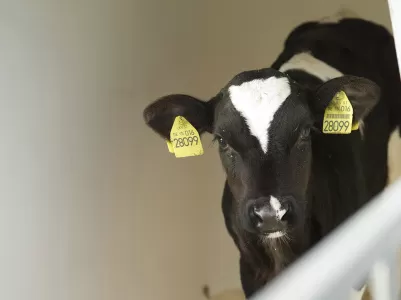
Share this message

Agros Expo 2022
On January 25-27, Moscow will host the Agros Expo 2022 international exhibition of animal husbandry, breeding and forage production. We invite you to familiarize yourself with our bestsellers - Comfort and Open Top Premium calf hutches! Booth K36,...
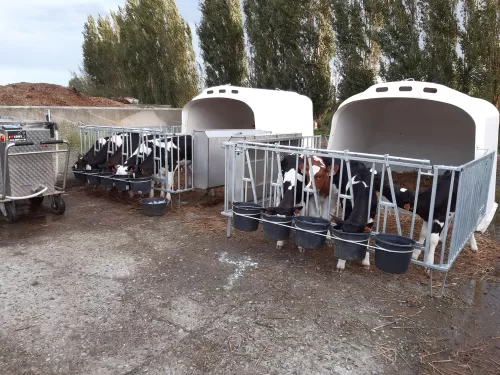
In conversation with...
Filip and Anja from dairy farm De Brabander LV Filip (49) and Anja (47) De Brabander-Vandierendonck have enjoyed running a dairy farm with 260 dairy cows together in the municipality of Zomergem (Lievegem) Belgium for the past 27 years....
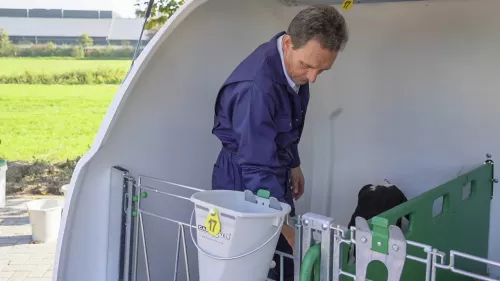
Reduce labour by up to 20% in the first four months
Investments in practical housing pay off. Calf rearing is a labour-intensive part of running a dairy farm. Proper calf rearing requires attention and care. Yet at many farms, it's possible to greatly reduce the amount of work. Labour savings...
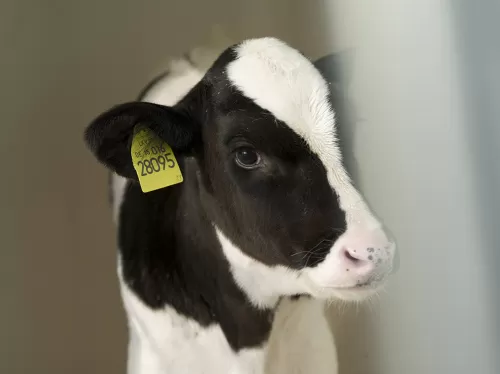
More growth and health in outdoor housing
Thorough calf rearing is essential for a good performance as a dairy cow. With a high feeding regime and an all-in, all-out housing in small, fixed groups, calves perform best. This according to research by the Dutch Dairy Campus/WUR with 224...
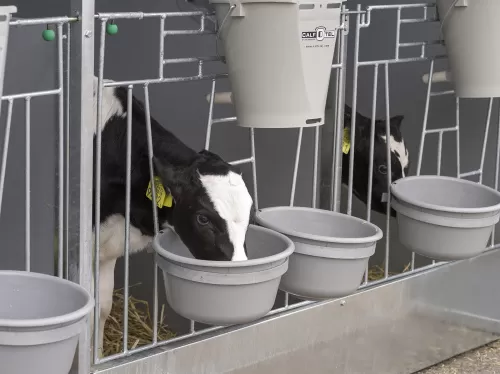
More attention for calf housing
In recent years, more and more attention has been paid to how calves are fed. This is not surprising, considering that the care given to young calves will determine their performance as dairy cows in the future. Research has shown that intensive rearing...

Plastic versus Polyester
Choice of materials determines lifespan. Calf hutches made from plastic or polyester: What will you choose? At first glance, they might seem similar. Yet there is a world of difference. Arjan Harbers, Sales Manager at VDK Agri,...

VDK Agri Open Top Premium wins Innov’SPACE!
VDK Agri has won a 2020 Innov’SPACE for the Open Top Premium Single and Duo! Our colleague Jean Bernard Béranger received the award yesterday.
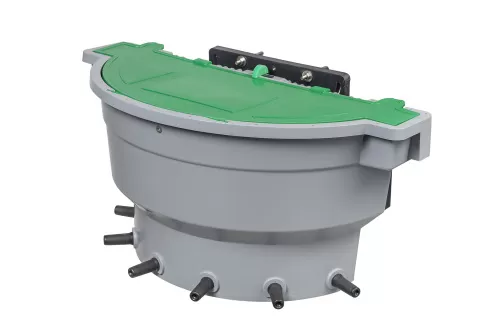
New products!
VDK Agri launches not one but three new products, among which a new line for indoor accommodation. These calf pens are suitable for dairy farmers who want to keep calves indoors or under a roof. The products were developed on the basis of the latest...
